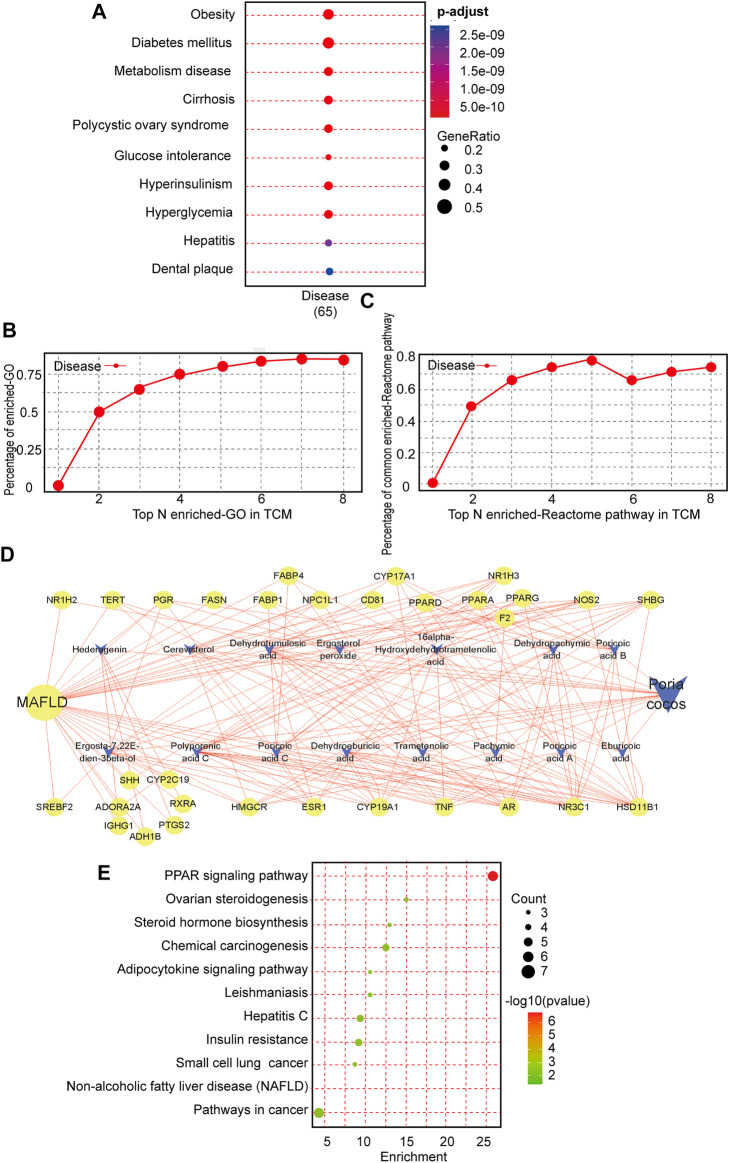FIGURE 1.
Intrinsic association and active compound identification of Poria cocos (P. cocos) for the treatment of MAFLD. (A) Metabolic dysfunction-associated fatty liver disease (MAFLD) Gene ontology (GO) enrichment. (B) Similarity of co-associated GO terms between P. cocos and MAFLD. The similarity between the co-associated GO terms of P. cocos and MAFLD was 0.87, and the area under the curve (AUC) of the top 30 of these terms was 4.84. (C) Similarity of co-associated Reactome pathways between P. cocos and MAFLD. The similarity between co-associated Reactome pathways of P. cocos and MAFLD was 0.78, and the AUC of the top 30 of these pathways was 4.47. (D) MAFLD-Poria cocos-target relationship network diagram. Nodes of higher degree value are indicated by a larger diameter and darker color. Stronger interactions between nodes are indicated with thicker edges and darker colors. Green represents the targets, orange represents the compound, and blue represents the disease. The circle represents the target and “V” represents the active component of P. cocos.(E) The Kyoto encyclopedia of genes and genomes (KEGG) pathway enrichment analysis of key targets.

